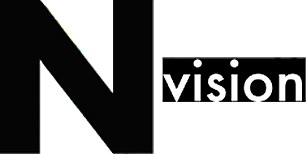With the assault on Charlie Hebdo and the deliberate murder of the five cartoonists Charb, Cabu, Georges Wolinski, Tignous and Honoré, the very principles of meaningful and personal visual expression, fundamental to illustration is under attack. Not just those that drive sharp satirical cartoons but the spirit that belies all forms of illustration.
Good illustration, particularly those in newspapers and magazines is not just pretty pictures. Reflecting on current events, illustrators are asked, to make a visual expression that represents an essence that engages and gives direction to the reader on how to think about the story. Illustrators use their ideas, their vision and their expression in service of this story, but by no means does this mean they are ‘servile’.
Cartoonists might more openly be acknowledged for an independent view, and might take these principles of free expression to the extreme. They use the power of drawing and image to present their opinion, and show us the world in sharp imaginative lines. This can be direct, ugly, sometimes blunt and offensive, but they mean to force a point that challenges the reader to think.
Rightfully, much has been discussed about the entirety of the attack and its aftermath, the possible political consequences, the social, racial and religious tensions, the principles of freedom of expression and the rights and wrongs of satire and the ‘right to offend’. Less has been said about the fact that what seems the most ‘offending expressions’ were not those that were written but drawn, not words but images. The attack on Charlie Hebdo was an attack on the power of the image and expression through visual language.
Where words can be clear and defined as well as be ‘read between the lines’, the meaning of handmade images is always between the lines, always a matter of interpretation, always personal and suggestive. Using their own visual language and visualizing skills, illustrators and cartoonists deliberately joust with all the ambiguities that lie between what you see and what this means; ‘Ceci n’est pas un pipe’ to overuse Magritte’s statement.
What is shown might look like representations of people, objects and actions, but in the end these drawings are only a series of lines, laden with signs and symbols, codes and relationships. Illustrations and cartoons are filled with meaning and intention. But what this intention exactly is, is open for interpretation and it’s the reader that is given the job of interpreter. A picture might proverbially tell more than a thousand words, but which words exactly is left open to the reader’s visual intelligence. This is exactly the strength and danger of the illustration. What illustrations do is suggest and at the same time ask the viewer to interpret, they ask the viewer to make up his or her own mind.
Trying to shut down this ultimate tool of protest and revelation has been the aim of many totalitarian, regimes, dictators and terrorists alike, whilst in turn use the same visual methods of besmirching and caricaturisation of those who dare to be critical or different. Perhaps cynically these attackers of Charlie have found the best method of stifling critique, particularly in this global networked society. It is not the brute force, through the atrocious attacks are part of their approach, but the fear that follows; the fear that can be maintained from anywhere in the world, and is so easily turned into enforced self-censorship.
Where those who publish or hold publishing channels dare no longer to host outspoken material, to present images that challenge and dare to cross the line. Understandably they fear the treats, the loss of revenue, of livelihood and now very real the loss of lives. Self-censorship, not out of respect for others, but based on fear, is what will close down freedom of expression, dull our visual expression and ultimately dull our visual intelligence. As illustrators we might be only left to create safe pretty pictures, let’s consider our options. Therefore I too say: ‘Je suis Charlie’.



